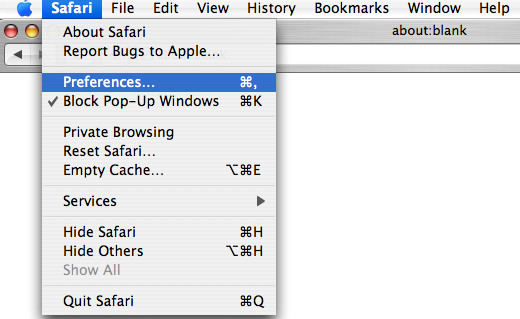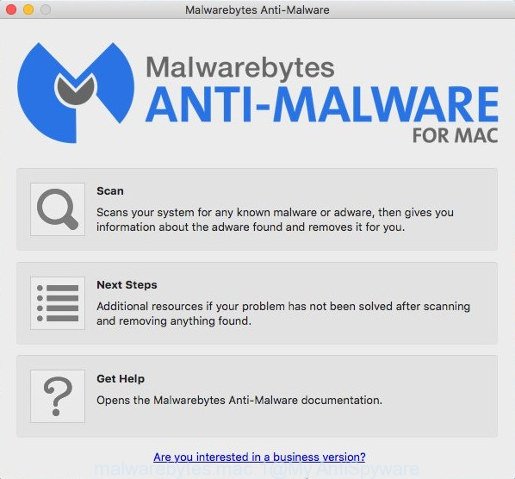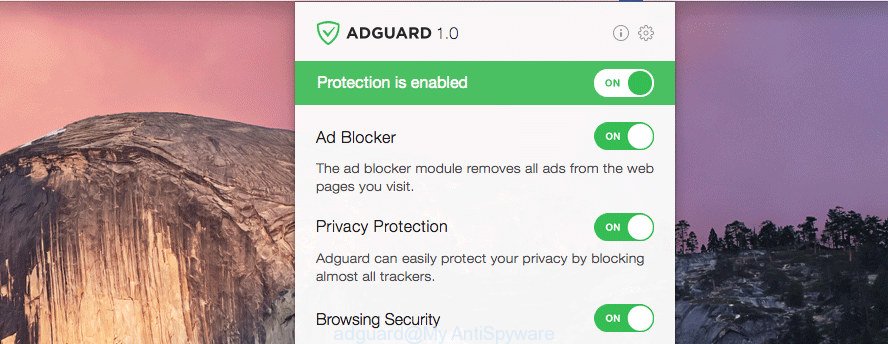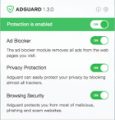Are you facing a problem with your web-browser that constantly redirects to an unwanted web-site called Gsecurecontent.com? Then, there are chances that your Mac is infected by a potentially unwanted application (PUA) from the adware (also known as ‘ad-supported’ software) category. Adware is a form of software whose motive is to generate revenue for its developer. It have different ways of earning by displaying the advertisements forcibly to its victims. Adware can open pop-up windows, display unsolicited advertisements, modify the victim’s web-browser settings, or redirect the victim’s web browser to unknown websites. Aside from causing unwanted advertisements and web browser redirections, it also can slow down the computer.

Unwanted ads
The worst is, adware software can collect user info, including:
- IP addresses;
- URLs visited;
- search queries/terms;
- clicks on links and advertisements;
- web browser version information.
How does Adware get on your Apple Mac
In many cases, adware gets onto Apple Mac by being attached to the setup files from file sharing websites. So, install a free programs is a a good chance that you will find a bundled adware software. If you don’t know how to avoid it, then use a simple trick. During the installation, choose the Custom or Advanced setup type. Next, press ‘Decline’ button and clear all checkboxes on offers that ask you to install additional software. Moreover, please carefully read Term of use and User agreement before installing any applications or otherwise you may end up with another unwanted program on your MAC such as this adware.
Threat Summary
| Name | Gsecurecontent.com |
| Type | adware, potentially unwanted program (PUP), pop up ads, pop-up virus, pop-ups |
| Symptoms |
|
| Removal | Gsecurecontent.com removal guide |
How to remove Gsecurecontent.com popup ads
Without a doubt, the adware is harmful to your MAC OS. So you need to quickly and completely delete this adware that causes pop ups. To delete this adware, you can use the manual removal tutorial that are given below or free malicious software removal tool such as MalwareBytes (it is free). We recommend you use automatic removal method which will help you to remove Gsecurecontent.com redirect easily and safely. Manual removal is best used only if you’re well versed in machine or in the case where adware software is not removed automatically. Read it once, after doing so, please bookmark this page (or open it on your smartphone) as you may need to close your web browser or restart your MAC system.
To remove Gsecurecontent.com, execute the following steps:
- How to manually delete Gsecurecontent.com
- Automatic Removal of Gsecurecontent.com popups
- Stop Gsecurecontent.com redirect and other intrusive webpages
- To sum up
How to manually delete Gsecurecontent.com
This part of the article is a step-by-step guidance that will show you how to remove Gsecurecontent.com popup ads manually. You just need to carefully complete each step. In this case, you do not need to install any additional programs.
Delete PUPs through the Finder
Some potentially unwanted software, browser hijacking software and adware may be removed by uninstalling the free programs they came with. If this way does not succeed, then looking them up in the list of installed software in Finder. Use the “Move to Trash” command in order to remove them.
Open Finder and click “Applications” as shown on the screen below.

You will see a list of programs installed on your computer. We recommend to pay maximum attention to the program you installed last. Most likely, it is the adware software associated with Gsecurecontent.com popups. If you’re in doubt, you can always check the program by doing a search for her name in Google, Yahoo or Bing. When the application which you need to uninstall is found, simply right click on its name, and choose “Move to Trash”.
Don’t forget, choose Finder, then “Empty Trash”.
Get rid of Gsecurecontent.com ads from Safari
The Safari reset is great if your web browser is hijacked or you have unwanted add-ons or toolbars on your internet browser, which installed by malware.
Click Safari menu and choose “Preferences”.

It will open the Safari Preferences window. Next, click the “Extensions” tab. Look for unknown and suspicious addons on left panel, select it, then click the “Uninstall” button. Most important to remove all unknown add-ons from Safari.
Once complete, click “General” tab. Change the “Default Search Engine” to Google.

Find the “Homepage” and type into textfield “https://www.google.com”.
Remove Gsecurecontent.com redirect from Firefox
If Mozilla Firefox settings are hijacked by the adware, your browser shows intrusive pop-up advertisements, then ‘Reset Mozilla Firefox’ could solve these problems. It’ll save your personal information like saved passwords, bookmarks, auto-fill data and open tabs.
First, launch the Firefox and press ![]() button. It will show the drop-down menu on the right-part of the browser. Further, click the Help button (
button. It will show the drop-down menu on the right-part of the browser. Further, click the Help button (![]() ) as displayed on the screen below.
) as displayed on the screen below.

In the Help menu, select the “Troubleshooting Information” option. Another way to open the “Troubleshooting Information” screen – type “about:support” in the web-browser adress bar and press Enter. It will display the “Troubleshooting Information” page like below. In the upper-right corner of this screen, press the “Refresh Firefox” button.

It will display the confirmation dialog box. Further, click the “Refresh Firefox” button. The Firefox will begin a task to fix your problems that caused by the Gsecurecontent.com adware. Once, it’s done, press the “Finish” button.
Remove Gsecurecontent.com pop-up advertisements from Google Chrome
If you have adware, Gsecurecontent.com popups problems or Chrome is running slow, then reset Google Chrome can help you. In this instructions we’ll show you the method to reset your Google Chrome settings and data to original settings without reinstall.

- First, launch the Google Chrome and click the Menu icon (icon in the form of three dots).
- It will display the Chrome main menu. Select More Tools, then click Extensions.
- You’ll see the list of installed extensions. If the list has the add-on labeled with “Installed by enterprise policy” or “Installed by your administrator”, then complete the following steps: Remove Chrome extensions installed by enterprise policy.
- Now open the Chrome menu once again, click the “Settings” menu.
- Next, click “Advanced” link, that located at the bottom of the Settings page.
- On the bottom of the “Advanced settings” page, click the “Reset settings to their original defaults” button.
- The Chrome will show the reset settings prompt as shown on the screen above.
- Confirm the internet browser’s reset by clicking on the “Reset” button.
- To learn more, read the article How to reset Chrome settings to default.
Automatic Removal of Gsecurecontent.com popups
Manual removal is not always as effective as you might think. Often, even the most experienced users can not completely delete adware that redirects your web browser to the annoying Gsecurecontent.com website. So, we suggest to check your MAC for any remaining harmful components with free adware software removal programs below.
How to get rid of Gsecurecontent.com with MalwareBytes Anti Malware (MBAM)
We advise using the MalwareBytes AntiMalware (MBAM). You may download and install MalwareBytes AntiMalware to detect adware and thereby remove Gsecurecontent.com advertisements from your web-browsers. When installed and updated, this free malware remover automatically scans for and removes all threats present on the machine.
Please go to the link below to download MalwareBytes Anti Malware (MBAM).
21021 downloads
Author: Malwarebytes
Category: Security tools
Update: September 10, 2020
After downloading is done, close all applications and windows on your MAC. Run the saved file. Follow the prompts.
The MalwareBytes will automatically start and you can see its main screen as displayed on the screen below.

Now click the “Scan” button to locate adware that causes annoying Gsecurecontent.com popup advertisements. While the MalwareBytes is scanning, you can see how many objects it has identified either as being malware.

As the scanning ends, MalwareBytes Anti-Malware (MBAM) will open a list of found threats. Review the results once the utility has done the system scan. If you think an entry should not be quarantined, then uncheck it. Otherwise, simply press “Remove Selected Items” button. The MalwareBytes AntiMalware will get rid of adware that causes pop ups and move the selected items to the Quarantine.
Stop Gsecurecontent.com redirect and other intrusive webpages
Run an ad blocking tool such as AdGuard will protect you from malicious ads and content. Moreover, you can find that the AdGuard have an option to protect your privacy and stop phishing and spam web-sites. Additionally, ad-blocking software will help you to avoid undesired pop-up advertisements and unverified links that also a good way to stay safe online.

- Download AdGuard on your machine from the link below.
AdGuard for Mac download
3782 downloads
Author: © Adguard
Category: Security tools
Update: January 17, 2018
- Once the downloading process is complete, start the downloaded file. You will see the “Setup Wizard” program window. Follow the prompts.
- When the setup is done, press “Skip” to close the install application and use the default settings, or click “Get Started” to see an quick tutorial that will assist you get to know AdGuard better.
- In most cases, the default settings are enough and you don’t need to change anything. Each time, when you run your MAC, AdGuard will start automatically and stop annoying advertisements, block Gsecurecontent.com, as well as other harmful or misleading web-pages.
To sum up
Now your MAC should be free of the adware related to the Gsecurecontent.com advertisements. We suggest that you keep AdGuard (to help you stop unwanted pop up ads and unwanted harmful websites) and MalwareBytes Free (to periodically scan your computer for new malicious software, browser hijackers and adware). Make sure that you have all the Critical Updates recommended for Mac operating system. Without regular updates you WILL NOT be protected when new browser hijackers, malicious applications and adware are released.
If you are still having problems while trying to remove Gsecurecontent.com redirect from your internet browser, then ask for help here.


















